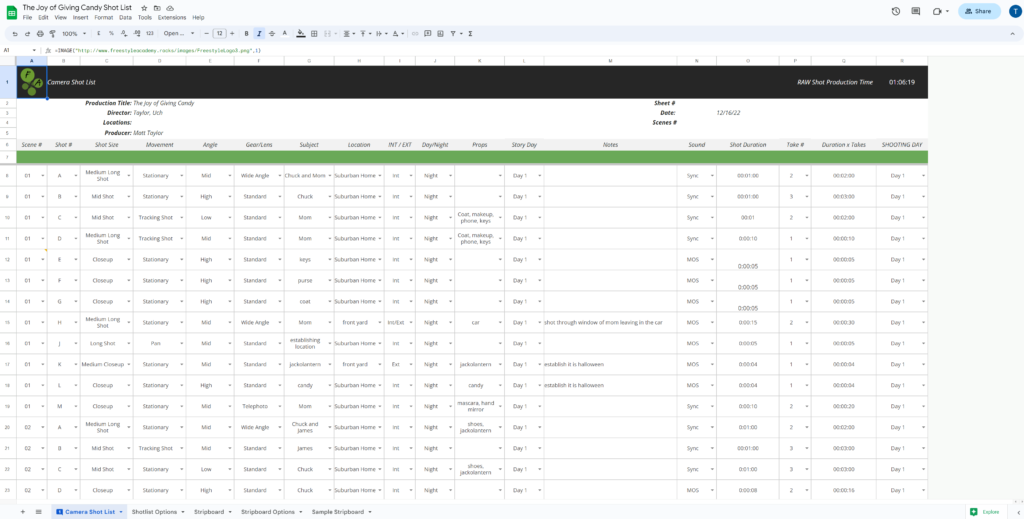1 Minute Movie
This one-minute movie came with many different parts. First, as a group, Issac, Ari, and I created a storyboard for a short film including no dialogue. We created a story about a cowboy trying to outsmart the sheriff in an old-west movie. However, after this, we were passed someone else’s storyboard and were assigned to film the footage outlined. We had to write a story about a drunk driver hitting someone. Following this, we were tasked with editing someone else’s footage together based on the storyboard they used. It was extremely difficult to make other people’s ideas come to life without them being present. Also, editing footage without being there makes it extremely clear why organization and slate are so helpful.
1 Period Film
For this next project, we were asked to create an idea for a film, film it, and then edit it all within a period. This project helped us practice efficiency and teamwork. In order to make the deadline, we had to split up our time to allow for the editing process. Even with our plan, we still were in a crunch to finish in time and as a result, we don’t have practice music.
Lighting Scavenger Hunt
In the process of learning about lighting set-ups, it is easiest to learn by doing. For this, we set to complete as many different lighting types such as a 3-light setup, a backlight, using tungsten lights, using LEDs, and so on.
The BIG Narrative Film
- Pitch/Logline
The logline is a short sentence or two that describes the general idea of our story. From the point of Uch’s proposal to our final logline, it changes and developed with our story.
(need to find)
- Synopsis
(need to find)
- Dialogue scene video
Once we had learned how to show coverage of a dialogue sequence we practiced with a scene written by Mr. Taylor. We started by lining the script and noting the props and cast.
- Screenplay
The screenplay was a long process of trial and error. Dialogue has to seem natural and flow the story along but not directly tell the audience what is happening. Outlining the actions of the characters is important as well as writing out locations and character descriptions. Uch and I did numerous different drafts of the script and developed the story further through this process. Even up until we started filming we continued to make edits.
- Shot lists
After writing your screenplay, the best way to plan for these long shoot days is to know what you have to get to have coverage for your scene. The way that this is done is by planning all the shots with their location, props, casting, what type of shot it is, and how long it will take to get such shots. This allows for more efficiency during filming days because the planning of what needs to get done is prepped prior.

- Schedule
Once you get your shot list done, you will have a better idea of what locations you need, who you need at what locations, and how long each of these shots will take to get. Once you know this, you can work with your actors and crew to set up when is best to film and how many shots need to be completed.
- Narrative Breakdown/Lined script
Lining and breaking down a script allows you to keep track of all the coverage of different types of shots necessary for dialogue and what props and cast are going to be needed.
- Acting Unit
For this unit, I was challenged with performing a dialogue sequence with a partner. Tyler and I performed a scene from Pulp Fiction. For this project, we all filmed our dialogue sequences in a multi-cam setup which allows us to use two cameras to have coverage of both characters at once. I found this scene particularly difficult because I had to get up and yell which is something very scary to me.
Written Reflection: What did you value from the specific processes and productions in Film?
I find the whole process very rewarding. It is really good at helping to learn organization, productivity, teamwork, and creativity. It covers a lot of skills that can be helpful in all industries. Organization and communication are things that I am working on, and the scheduling, shot lists, and narrative breakdown provided many opportunities to improve. Communication and working with so many people was a struggle, especially finding a crew. We had to plan our filming dates ahead of time and find people to help us out with all of the extensive equipment that we had to manage.